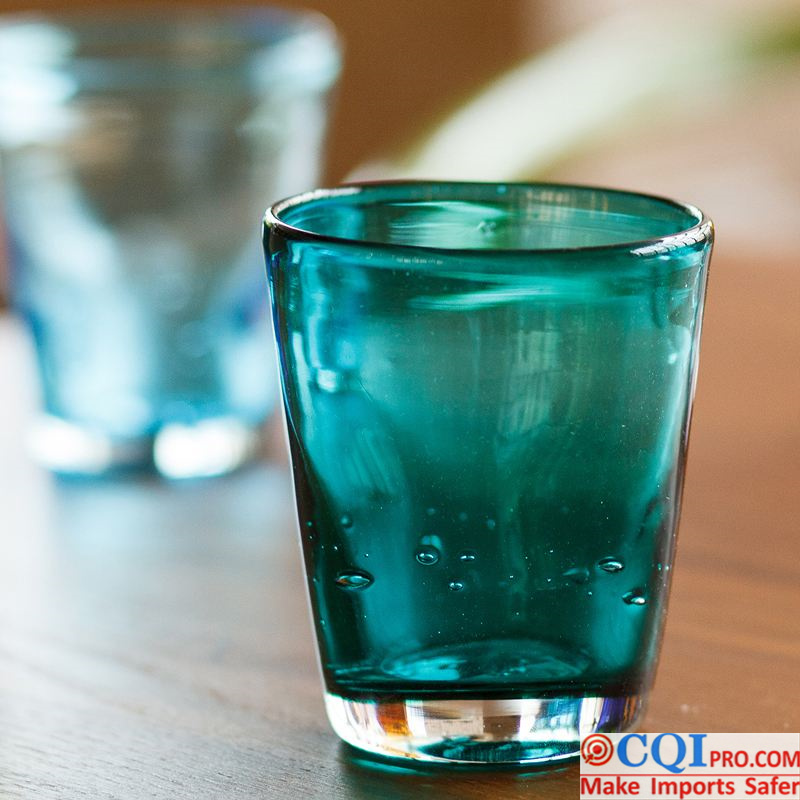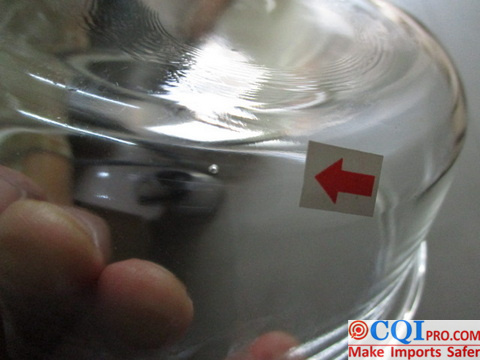Watch Out for Glassware’s Bubbles You Imported!
Categories:● Voice Of Quality Quality Cases Quality Mirror 未分类
Tags:2583 glassware quality inspection
By For Safer Imports • 07/16/2021 • No Comments
Glass products are widely used in practical applications. As a big country in glass production and consumption, China’s glass products are relatively stable in technology and quality control, and glassware quality inspection is mature, but in other words, the products are not always perfect, such as glass products often with common defects such as bubbles, scratches, wavy lines, furuncles, inclusions, missing edges and broken edges,etc.

Among them, bubbles are common defects in glass products and are strictly controlled in glassware quality inspection ( except for glass products with special technology requirements for bubbles). These small bubbles will not only affect the service life of the products, but also directly reduce consumers’ purchasing desire. Therefore, the international importers or retailer will require the third-party inspection organization to strictly control the defect of air bubbles during glassware quality inspection, otherwise it may face the sale problem, such as Return.

Bubble is an amorphous defect in glass products, which is caused by gas not eliminated in the production process. According to the causes of bubbles, they can be divided into original gas bubbles, regenerated bubbles and bubbles of other causes. There are the following reasons:
The original gas bubbles were caused by poor clarification, while the regenerated bubbles were formed again after clarification due to lower temperature during cooling. According to the difference in the origin, shape and distribution of the two types of bubbles, CQI experienced QC can judge and analyze the origin of bubbles from the QA point of view when glassware quality inspection is in progress, which will be remarked in inspection report, for further information to let clients know clearly the quality problem of the product.


As we all know, glass bubbles have an impact on the service life and life of glass products. When checking the size and quantity of bubbles in glassware quality inspection , it will not be a problem in practical use if the diameter is less than 0.3 mm, and if the quantity of bubbles is too large, the appearance will become defective. If the bubble is larger than 1 mm, it will be more dangerous in use. For example, heating in a microwave oven may cause an explosion, which will hold the importer and retailers’ responsibilities jointly. Therefore, both the importer and retailers hate the bubble defects in glass products, and glass bubbles should never be underestimated in glassware quality inspection , especially for international importers importing glassware from China.
This article is an original article for CQI Inspection, who is committed to providing high-quality product inspection technology and know-how sharing for global importers and retailers to make imports safer.
All rights reserved. The contents of this website provided by CQI Inspection may not be reproduced or used without express permission.
For reprint, please contact with CQI Inspection, thank you.
2543 2607 2659 2667 2676 2682 2683 2685 2687 2692 2693 2699 2700 2705 2708 2714 2715 2716 2743 2744 2746 2748 backpack defect check Children furniture quality control China disposable medical gloves Electric toothbrush cost Electric toothbrush inspection Electric toothbrush waterproof inspection Electronic scale quality inspection Glove testing consultation infrared thermometer testing consultation Lighter inspection Lighter process inspection Mask inspection nitrile gloves inspection Pajamas process inspection Plastic clip quality check Quartz watch inspection Quartz watch process inspection Sofa bed inspection solid flooring inspection stainless steel quality control Umbrella process inspection Wenzhou shoes inspection Zhangzhou watch inspection